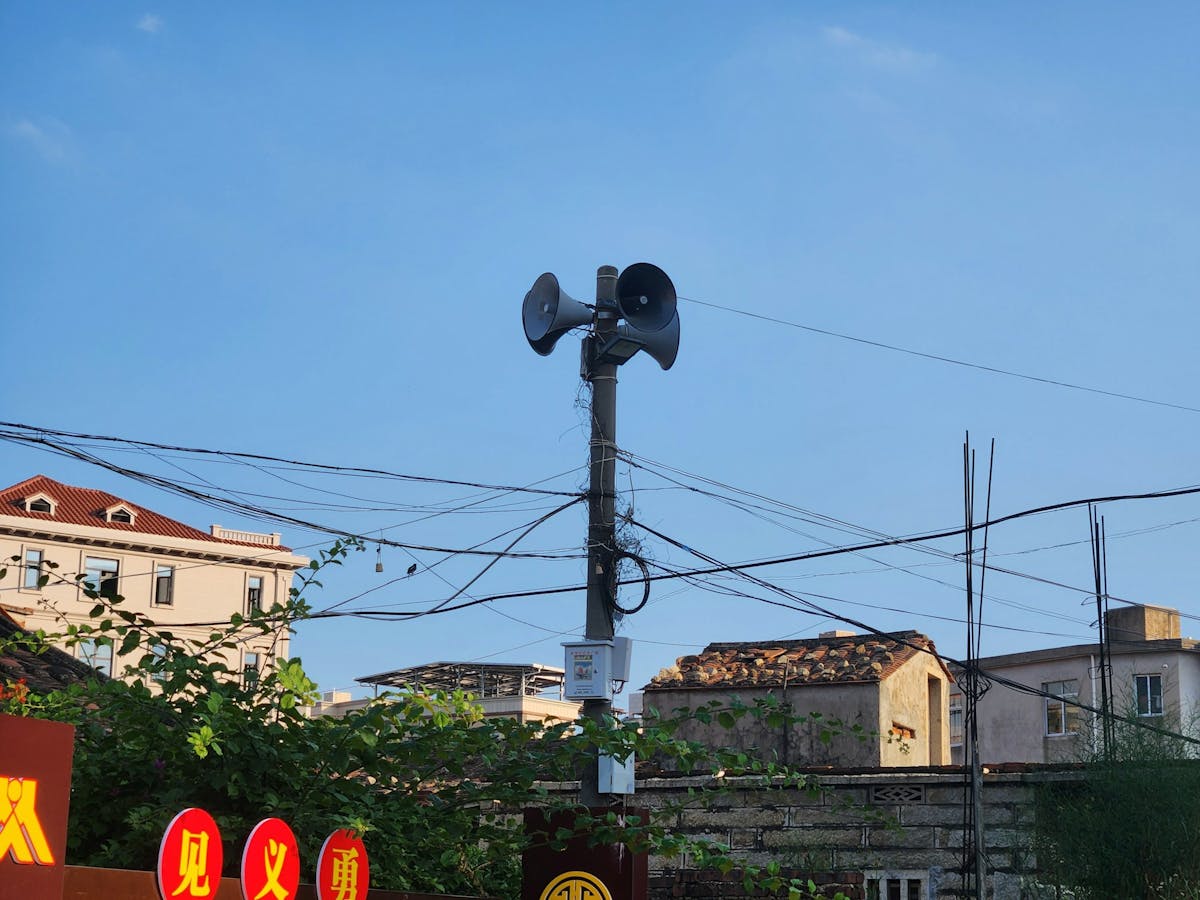Crisis Management: A Comprehensive Guide


An enterprise wide crisis can threaten your organization's survival, reputation, and operations. These events affect multiple departments, stakeholders, and sometimes entire industries. As organizations grow more complex and interconnected, knowing how an enterprise wide crisis works helps create effective management and resilience. Identifying potential threats before they emerge allows companies to develop robust response strategies that protect both their business interests and their workforce during challenging times.
Common Types of Enterprise-Wide Crises
Enterprise wide crises can arise from various sources, affecting organizations differently. Preparing for these types of crises requires familiarity with their patterns:
- Natural Disasters: Hurricanes, floods, earthquakes, wildfires, and tornadoes threaten organizations across sectors. Hurricane Katrina caused months-long production halts across U.S. Gulf Coast manufacturing and logistic hubs.
- Cybersecurity Breaches: Unauthorized access to sensitive data can devastate organizations. These breaches hit especially hard in healthcare, finance, and technology sectors. Remember the 2017 WannaCry ransomware attack? It disrupted hospital operations across the UK's National Health Service, compromising patient care and data security.
- Physical Security Incidents: This includes theft, sabotage, terrorism, activist disruption, workplace violence, and vandalism. Theft of high-value manufacturing materials costs U.S. businesses $300 million to $1 billion annually.
- Economic/Financial Crises: Insolvency, bankruptcy, or sustained revenue loss can stem from market downturns, major client losses, or inflation. Delta Air Lines filed for bankruptcy in 2005 after travel demand plummeted post-9/11.
- Technological Failures: Major IT infrastructure failures or disruptive competitor innovation can halt operations and weaken competitive advantage. An e-commerce server outage can cause significant sales losses and erode customer trust.
- Accidental Disasters: Power outages, fires, gas leaks, or chemical spills can stop production, disrupt supply chains, and put lives at risk.
- Disease Outbreaks and Pandemics: COVID-19 showed how widespread infection can shut down manufacturing, logistics, and healthcare operations globally.
- Leadership or Organizational Crises: Losing top leaders, management scandals, or toxic workplace culture affects operations, morale, and public perception.
- Supply Chain Disruptions: Supplier failures, transport breakdowns, or border closures impact operations across industries.
The Challenge for Non-Desk Workforces
Organizations with large non-desk workforces face unique challenges during an enterprise wide crisis:
- Communication Barriers: Email often fails to reach workers in the field, on production lines, or in patient care roles. Utilizing effective employee engagement tools can help bridge this gap and engage non-desk workers.
- Safety Concerns: Many non-desk jobs involve physical risks that worsen during crises.
- Operational Continuity: Maintaining essential services while ensuring worker safety creates complex challenges.
- Training and Preparedness: Training dispersed workforces for crisis readiness requires creative approaches.
Enterprise wide crises are complex, often interconnected events requiring comprehensive planning and coordinated responses. COVID-19 showed how a single crisis can simultaneously hit health systems, supply chains, labor markets, and consumer demand. Organizations must develop crisis management strategies that address their industry's unique challenges, workforce composition, and operational structure. Thorough preparation protects your stability and your employees' wellbeing during crisis situations.
Blueprint for Effective Enterprise Wide Crisis Management
When crisis strikes, having a solid plan makes all the difference. A strong approach addresses prevention, response, and recovery—keeping your organization ready before, during, and after any enterprise wide crisis.
Prevention: Laying the Groundwork
Before crisis hits, take these important steps:
- Risk Identification and Assessment: Regularly check for threats specific to your organization. What natural disasters might affect your region? Are you vulnerable to cyberattacks? Could your supply chain snap under pressure?
- Crisis Leadership Team Formation: Build a team from different departments, including frontline supervisors who understand non-desk workers' realities. Meet regularly to keep crisis plans fresh.
- Creating a Safety Culture: Encourage everyone to speak up about potential hazards. Your frontline workers often spot problems first—listen to them.
Response: Acting Decisively
When crisis hits, you need clear action plans:
- Action Plans: Create specific, step-by-step procedures for different scenarios. Everyone should know their role when trouble strikes.
- Evacuation Procedures: Post clear evacuation plans where everyone can see them. Remember workers with disabilities and those in remote locations—they need special consideration.
- Emergency Services Liaison: Build relationships with local emergency services before you need them. Share facility layouts and other important information to speed response time.
Recovery: Bouncing Back
After the immediate danger passes, focus on these aspects:
- Business Continuity: Know how you'll keep important functions running. This might mean temporary relocation, remote work, or finding alternative suppliers.
- Employee Wellbeing: Put your people first after a crisis. Offer counseling, flexible schedules—like exploring AI and the four-day workweek—or additional support for those directly affected. For non-desk industries, you can focus on wellness programs to help support your employees.
- Plan Updates: After each crisis, big or small, ask: "What worked? What didn't?" Use these insights to strengthen your plans.
Building an Effective Crisis Response Team
Your crisis team needs the right people in the right roles:
- Crisis Coordinator: Oversees the entire response effort
- Communications Lead: Manages internal and external messaging
- HR Representative: Addresses employee concerns
- Operations Manager: Keeps important business functions running
- IT/Cybersecurity Specialist: Handles technology issues
- Legal Advisor: Navigates compliance and legal implications
Don't forget to include frontline supervisors who understand the challenges non-desk workers face during emergencies.
Crafting a Strong Crisis Management Plan
Your plan needs to grow and change with your organization:
- Risk Assessment: Regularly identify and evaluate potential threats.
- Communication Protocols: Establish clear channels for different scenarios. Remember that non-desk workers need different communication tools than office staff.
- Action Checklists: Create detailed, step-by-step lists for various emergencies. When stress runs high, these keep everyone on track.
- Recovery Planning: Include strategies for business continuity and long-term recovery.
- Regular Reviews and Updates: Schedule periodic reviews, especially after incidents or near-misses.
Improving Organization-Wide Strategy
Make your crisis plan work for your entire organization:
- Tailor Plans to Different Departments: Manufacturing needs different crisis procedures than accounting. Work with department heads to customize appropriately.
- Consider Non-Desk Worker Needs: Field workers, production staff, and healthcare providers have unique challenges during crises—address them specifically. Enhancing engagement in the construction industry is crucial for effective crisis management.
- Integrate with Existing Systems: Your crisis plan should complement IT disaster recovery plans and HR policies.
- Use Technology Effectively: Implement crisis management tools that reach all employees quickly, regardless of their location or role.
- Regular Training and Drills: Practice improves performance. Run crisis simulations so everyone knows what to do when real emergencies happen.
With this comprehensive approach to enterprise wide crisis management, your organization will be ready to face challenges head-on. Preparing thoroughly, responding effectively, and recovering strategically helps your organization not only survive crises—but come through them stronger than before.
Adapting Crisis Management for Non-Desk Workforces
In industries with many non-desk workers—like manufacturing, logistics, and healthcare—traditional communication tools fall short during emergencies. These environments demand faster, simpler, and more direct ways to keep everyone informed and aligned.
Here’s how to adapt your crisis communication strategy:
- Multichannel Communication: Use SMS as a primary channel, supported by physical notice boards, loudspeakers, or handheld radios. Unlike email or app-based platforms, SMS reaches workers instantly—even if they’re deep inside a warehouse or on the factory floor. It doesn’t require Wi-Fi, logins, or company-issued devices. It just works. And with 98% open rates—usually within minutes—it ensures critical information isn’t lost in a digital void.
- On-Site Crisis Teams: Train supervisors and frontline leads to make rapid decisions and coordinate responses locally. These people become your bridge between top-down strategy and on-the-ground action.
- Practical Drills: Go beyond theory. Run realistic simulations tailored to your actual work environments—forklifts, operating rooms, delivery routes—not just conference rooms.
- Simplified Messaging: Non-desk employees don’t have the luxury of parsing long paragraphs in a rush. SMS forces clarity. Use short, action-oriented language that tells people exactly what to do—fast.
- Feedback Channels: Create low-friction ways for frontline employees to report what they’re seeing. This could be an SMS number they can text, a QR code on posters, or a designated point person they know and trust.
In a crisis, confusion is the enemy. SMS provides clarity, immediacy, and accessibility—three things non-desk teams need to respond confidently under pressure. When your communications meet people where they are, you earn trust. That trust becomes the foundation for faster recovery, stronger teamwork, and a safer, more resilient workplace.
Yourco was built for moments like these. As a SMS-based communication platform designed specifically for companies with large non-desk workforces, it makes it easy to send critical SMS updates, gather real-time feedback, and maintain visibility when everything’s on the line. Whether you're navigating a power outage, supply chain disruption, or an unexpected staffing issue, Yourco helps you keep communication human, timely, and actionable—right from your phone.
Developing a Resilient Organizational Culture
A strong organizational culture forms the bedrock of effective enterprise wide crisis management. Resilient cultures don't just help companies survive crises—they enable them to bounce back stronger. Here's how to build this resilience, especially when your workforce isn't sitting behind desks.
Main Characteristics of Resilient Cultures
- Strong Leadership Engagement: Leaders in resilient organizations show their commitment to preparedness through actions, not just words. They understand their employees' challenges and drive engagement at every level.
- Agility and Adaptability: Resilient organizations pivot quickly, make fast decisions, and recover rapidly using both digital tools and physical systems.
- Focus on Safety and Risk Management: These organizations continuously look for potential problems, prepare backup plans, and treat crisis management as an ongoing process.
- Emotional Support Mechanisms: Recognizing that crises trigger anxiety and stress, resilient cultures provide resources to support their people's emotional wellbeing. For example, strategies to manage election stress in the workplace can contribute to overall resilience.
- Diverse and Empowered Workforce: Organizations that embrace diversity, collaboration, and employee empowerment build teams better equipped to handle unexpected challenges.
- Continuous Learning: Resilient organizations invest in both people and infrastructure, creating flexibility that helps them adapt to changing circumstances.
A resilient organizational culture is one that brings people together, inspires productivity, and encourages resilience ... where employees are encouraged to learn from missteps and are recognized for their successes, and collaboration amongst all teams and seniority levels is encouraged.
Building a Resilient Culture
To develop these characteristics:
- Systematic Collaboration: Create opportunities for teamwork across departments and levels.
- Positive Future Vision: Help employees see how their work contributes to something meaningful and forward-looking.
- Values Alignment: Connect personal and organizational values to build trust in leadership.
- Respect and Accountability: Promote civility in the workplace and ensure accountability at all levels.
- Results-Driven Mindset: Focus on achieving meaningful outcomes, especially under pressure.
Training and Preparedness
Effective training builds and maintains resilience:
- Crisis Simulations: Run realistic drills to practice crisis response. This matters especially for non-desk workers who face unique challenges during emergencies.
- Continuous Learning: Provide regular training on new risks and crisis management practices. For non-desk workers, consider on-site training or mobile learning options.
- Emotional Resilience Training: Include stress management and mental health resources to help employees cope with pressure.
- Communication Skills: Train employees to communicate clearly during crises. For non-desk workers, focus on practical communication methods relevant to their work settings.
- Decentralized Decision-Making: Give frontline teams the authority and guidance to respond independently when needed.
Case Study: Toyota's Culture of Continuous Improvement
Toyota empowers its frontline workers to stop production lines if they spot a problem. This builds trust, accountability, and continuous improvement. Through identifying and fixing issues early, Toyota maintains its reputation for quality and reliability.
Measuring and Sustaining Resilience
To maintain resilience over time:
- Use assessment tools to measure team collaboration, values alignment, leadership trust, and accountability.
- Create feedback loops to continuously improve culture and training.
- Include resilience measures in performance reviews and leadership development.
- Recognize and reward adaptability and collaboration, especially among non-desk workers whose insights often prove invaluable.
Building a resilient culture is an ongoing process that needs commitment from leaders and participation from all employees. Developing these qualities and refining training programs creates the adaptability needed to handle enterprise wide crises effectively and come out stronger.
Mitigating Future Risks
The risk landscape continues to evolve. Advanced cyber threats, climate disasters, supply chain vulnerabilities, and public health crises challenge even the most prepared organizations. Staying ahead requires a proactive approach to risk assessment and mitigation.
Continuous Risk Assessment
Regular risk audits help spot potential threats before they materialize:
- Run scenario planning sessions to anticipate various crisis situations
- Scan IT systems and physical infrastructure for vulnerabilities
- Collect feedback from stakeholders, especially frontline workers
Don't overlook your frontline workers' insights. They often notice operational vulnerabilities before they show up in formal reports.
Innovations in Risk Management
New technologies offer powerful tools for risk identification and mitigation:
- AI-Powered Analytics: Forecast potential crises through analyzing patterns in vast datasets.
- IoT Sensors: Detect physical threats early, from equipment failures to environmental hazards.
- Advanced Communication Technologies: Platforms like Yourco's SMS platform ensure fast, reliable crisis communication—important for organizations with non-desk workforces.
These tools help organizations identify and respond to crises faster, often before they become major incidents.
Cross-Industry Collaboration
Sharing knowledge across industries enhances risk management capabilities. Participating in industry forums, research initiatives, and information-sharing networks provides valuable insights for addressing common threats.
The Role of Leadership in Risk Mitigation
Effective risk mitigation starts at the top:
- Allocate resources for risk management initiatives
- Promote risk awareness throughout the organization
- Integrate risk management into strategic decision-making
As a recent study on organizational resilience notes, "Companies that embrace flexible, SMS-based systems uncover unforeseen advantages: stronger team cohesion, higher productivity, and improved community standing." Investing in robust communication systems forms an important part of comprehensive risk mitigation.
Employee Training and Preparedness
Regular training ensures all employees, especially those in non-desk roles, can respond effectively during crises:
- Run scenario-based exercises simulating potential crisis situations
- Train workers on communication tools and protocols
- Educate staff about emerging risks relevant to your operations
Well-prepared employees respond quickly and effectively when crises occur.
Mitigating future risks requires ongoing attention and resources. Proactively assessing risks, using innovative technologies, collaborating across industries, and securing strong leadership commitment helps organizations build resilience against potential threats. As risks evolve, so must our strategies for addressing them, ensuring enterprises remain stable and adaptable amid uncertainty.
Your Blueprint for Crisis-Ready Organizations
Throughout this article, we’ve explored the essential components of enterprise-wide crisis management. From identifying different types of crises to developing response plans and building organizational resilience, these strategies are not just theoretical—they are practical tools for protecting your people and operations.
Effective crisis management blends preparation, communication, and adaptability. It depends on having a well-documented plan that outlines clear roles, responsibilities, and step-by-step actions. More importantly, that plan must be dynamic—ready to evolve with your organization, your people, and the realities of each department, site, and worker type.
Communication is the linchpin, especially for organizations with large non-desk workforces. In high-stakes situations, the ability to reach every employee immediately can be the difference between a controlled, coordinated response and widespread confusion. That’s why companies turn to Yourco’s SMS-based platform—purpose-built for deskless teams across manufacturing, construction, logistics, healthcare, and more.
Yourco delivers instant communication in 135+ languages, directly to employees’ phones—no apps, logins, or internet required. Its two-way messaging enables workers to confirm their safety status or request help, while crisis communication templates allow HR and safety teams to launch coordinated responses within seconds.
But Yourco doesn’t stop at delivery. It provides an analytics dashboard that enables the corporate office to assess the effectiveness of its crisis response program across all locations. Leaders gain visibility into message delivery rates, employee engagement, and compliance behaviors—helping them identify gaps, measure impact, and implement targeted improvements that strengthen the organization's overall preparedness.
Try Yourco for free today or schedule a demo to see how the right communication platform empowers your team to stay ready, responsive, and resilient—no matter what comes your way.



